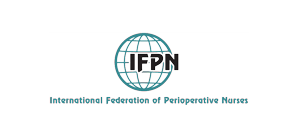FALLS IN THE ELDERLY: A CONTEMPORARY ‘HEALTH EPIDEMIC’? A DISCUSSION PAPER
Αντιγόνη Φουντούκη, Ευανθία Ασημακοπούλου, Δημήτριος Θεοφανίδης
Πέμπτη, 1 Ιουλίου 2021
Έτος δημοσίευσης:
2021
Συγγραφείς:
- Φουντούκη Αντιγόνη, PhD(c), MSc, Clinical Lecturer, Nursing department, Clinical Professor, Alexandreio Educational Institute of Thessaloniki, Greece
- Ασημακοπούλου Ευανθία, Λέκτορας,Τμήμα Νοσηλευτικής, Frederick University,Cyprus
- Θεοφανίδης Δημήτριος, PhD, MSc, Assistant Professor, Nursing department, Clinical Professor, Alexandreio Educational Institute of Thessaloniki, Greece
Ευρετήριο όρων:
Σελίδες: 154-174
Περίληψη:
Introduction: Increased life expectancy has risen in most parts of the world, indicating an improvement in public hygiene, diet and healthcare. Yet, the elderly remain a relatively frail population susceptible to a wide range of physical risks. The purpose of this review is to investigate the causes and risks of falls in the elderly. Method: A literature search was carried out using systematic reviews and research articles in the following databases: MEDLINE, CINAHL and MEDICAL-CHECK, as well as in individual Greek scientific journals. The search terms used were combinations of the following terms: ‘falls’, ‘elderly’, ‘nursing’, ‘falls prevention’, ‘falls assessment’, ‘falls risk’, as well as the corresponding terms in Greek, during the last twenty years. Results: The systematic search yielded 400 articles in English and 9 in Greek. Of these, 102 were included and the rest rejected because they did not meet the entry criteria. In particular, 60 articles were found in MEDLINE, 40 in CINAHL and 2 in Google scholar. Finally selected for critical discussion 20 articles.The findings were categorized in the following four major subgroups and elaborated accordingly: Exogenous factors, Endogenous factors, Financial burden of falls and Prevention and education. Discussion: As falls are a frequent and dangerous phenomenon for the elderly, healthcare professionals should be able to assess the capabilities of older people, especially in terms of balance and recommend suitable exercise programs. A simple exercise program should aim at the best possible outcome by involving a combination of activities, which include walking, cycling, aerobic drills and other resistance exercises. Such an exercise protocol can therefore be used to improve the static and dynamic balance of the elderly. Conclusions: In conclusion, as the number and percentage of elderly people continue to increase worldwide, new approaches to preventing falls are imperative. It is more difficult is to treat the consequences of falls than prevent them. Causes need to be identified and programs designed to promote health and prevention of falls which should be implemented through both hospital and community services in a seamless way.
Πλήρες κείμενο PDF


